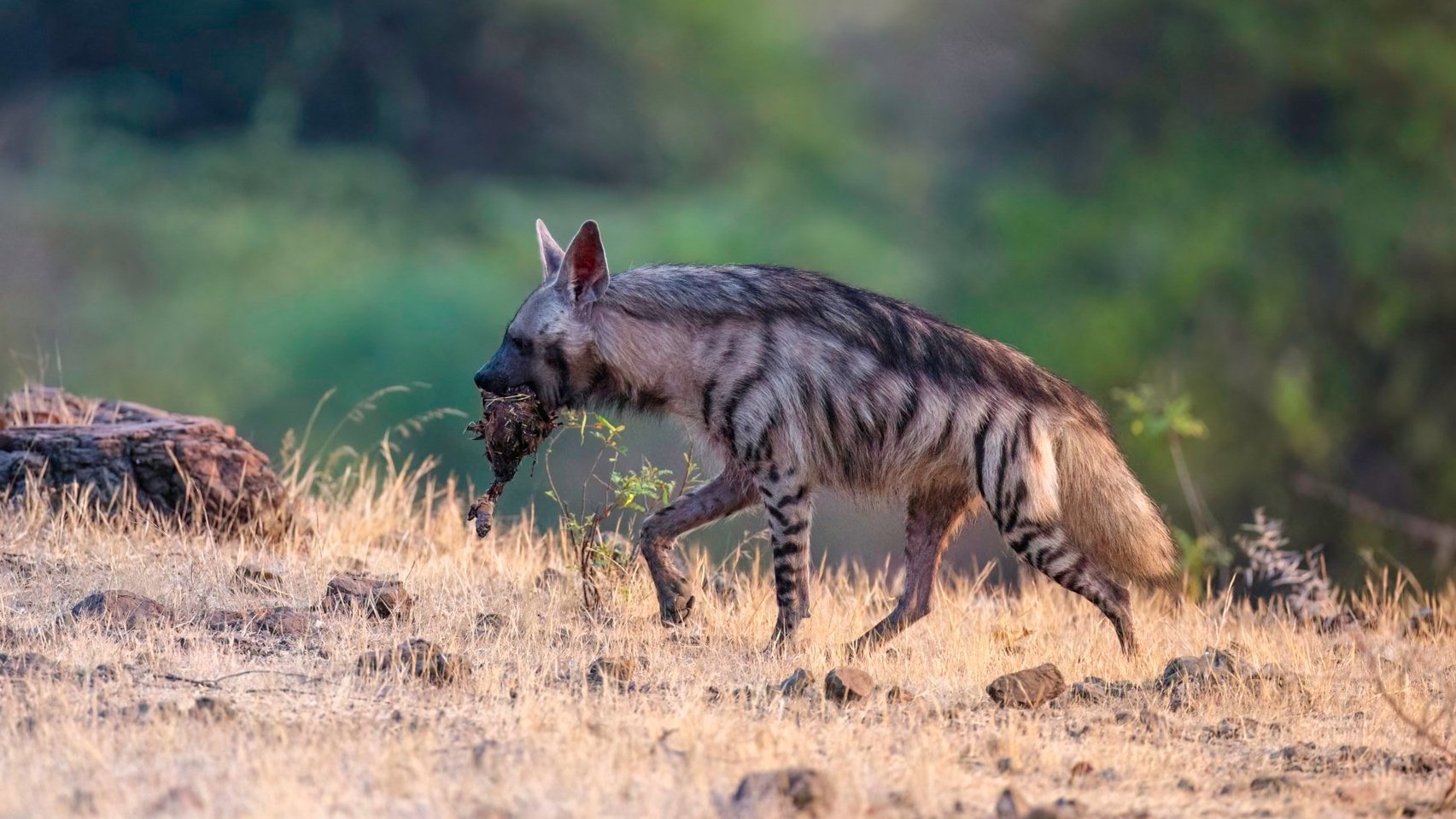Field & Craft
Getting close in the wild
When I first attempted wildlife photography, I knew about birds and other animals - what they looked like, etc., but had little success in photographing them because I didn't learn any field craft or research the behaviour and habitat of what I was photographing. A close friend, who I’ve accompanied on many bird observation and photography walks, makes sure he reads up on the birds and their calls before we head out. He’s able to identify the bird at the first glance and also from their calls. Doing your homework makes a big difference in the photos and makes the entire experience enjoyable.
One of the most challenging aspects of wildlife photography is getting close to the subject. The act of moving stealthily and stalking wildlife is known as “fieldcraft”, and it comes with experience of being outdoors and learning from the mistakes we make. Approaching animals is a marathon, not a sprint, and fast approaches will result in clumsy errors that cause the subject to become jumpy and eventually & very quickly disappear into the distance or undergrowth.
One might opt for a super-telephoto lens on a crop sensor camera to get that extra reach, and I’ve shot with both a crop sensor and 600mm lens with a 2x extender and a full frame with a 70-200mm. The answer, in my opinion, is just to get close to the subject to fill the frame and also to get the best shot.
But how exactly does one do that? It’s easy to say “get closer”, but some animals have spent thousands of years evolving senses that allow them to detect predators. Deer, for example, have excellent hearing and will leave you in their dust at the sound of a dead leaf crunching underfoot or a twig snapping.
Here are some suggestions that have helped me approach and get close to wildlife for observation and photographic purposes.
Move whenever an animal is grazing, feeding or sleeping
If you’re stalking close to a mammal, chances are that they are probably feeding. Begin your approach whenever the animal’s head is down, focused on its natural activities. Never take your eyes off of your target, and when you see them raise their heads you must freeze. Don’t necessarily drop down into cover if they’ve already locked onto you, but remain still until they look down again. It may help to tilt your head to the side, showing just one eye towards the animal in question. This is because predators will look at an animal with two forward-facing eyes – showing just one eye may make you look more like a prey animal, and less of a threat. This is just a hypothesis of mine, though, and may not make any difference – but it can’t hurt to try!
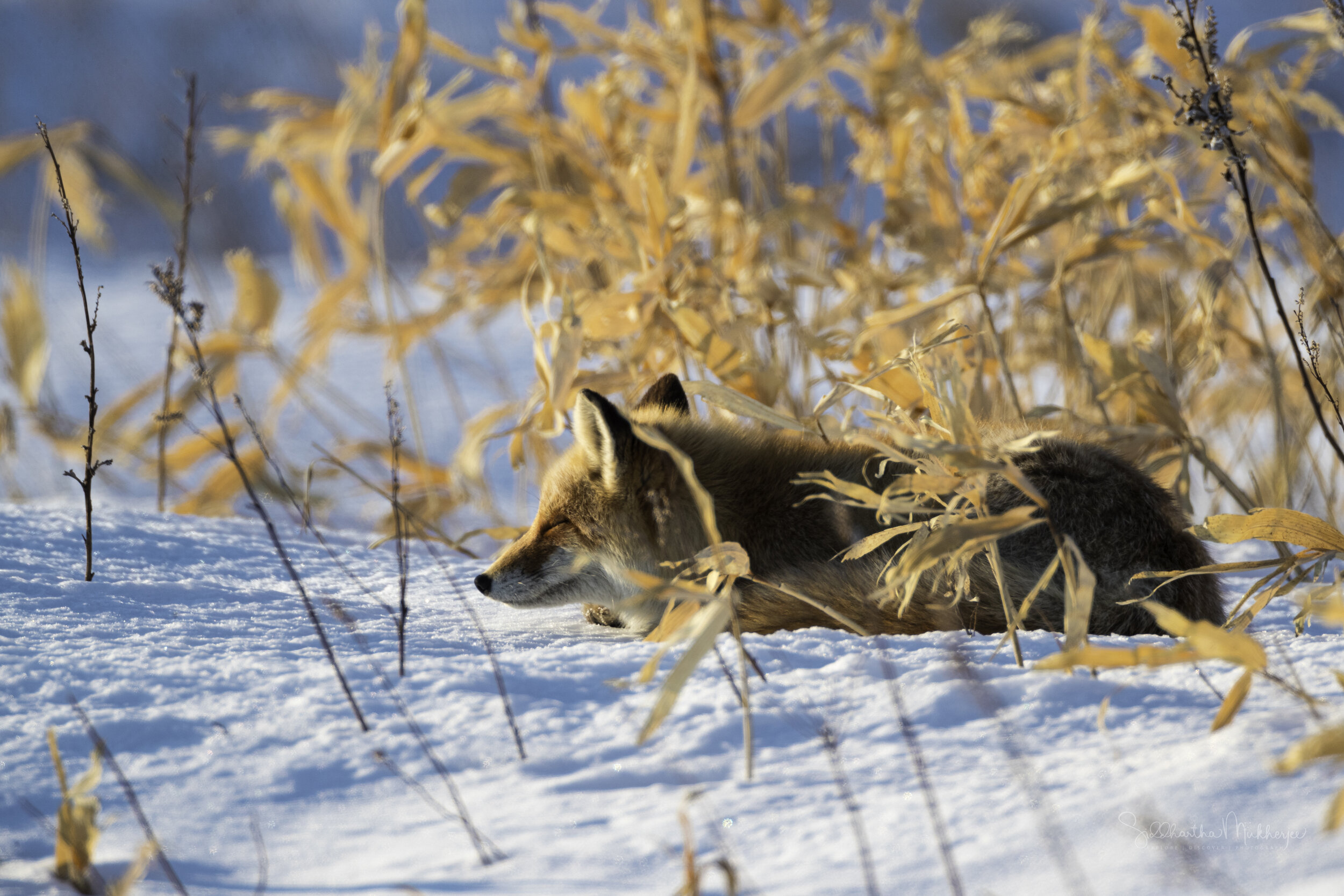
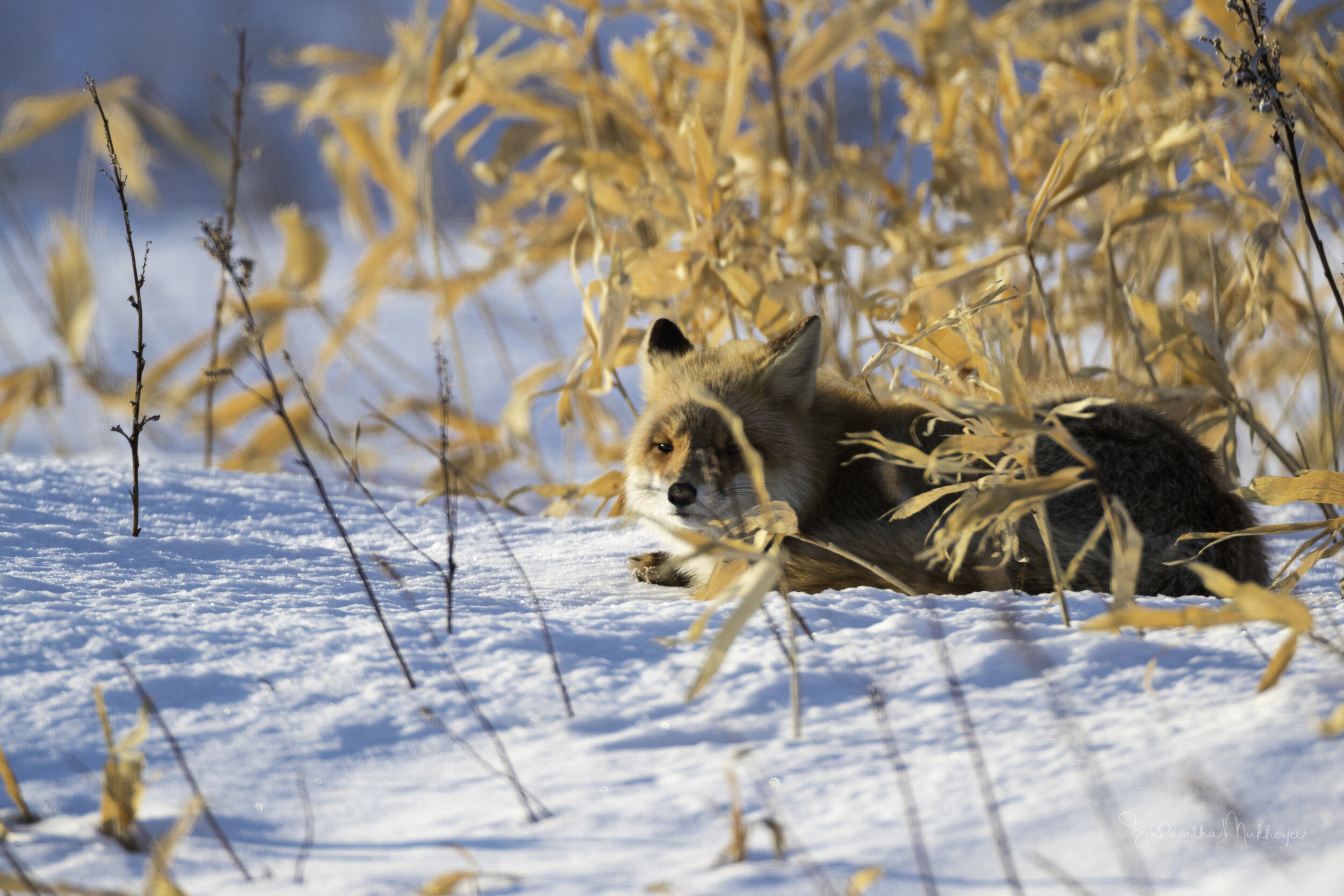
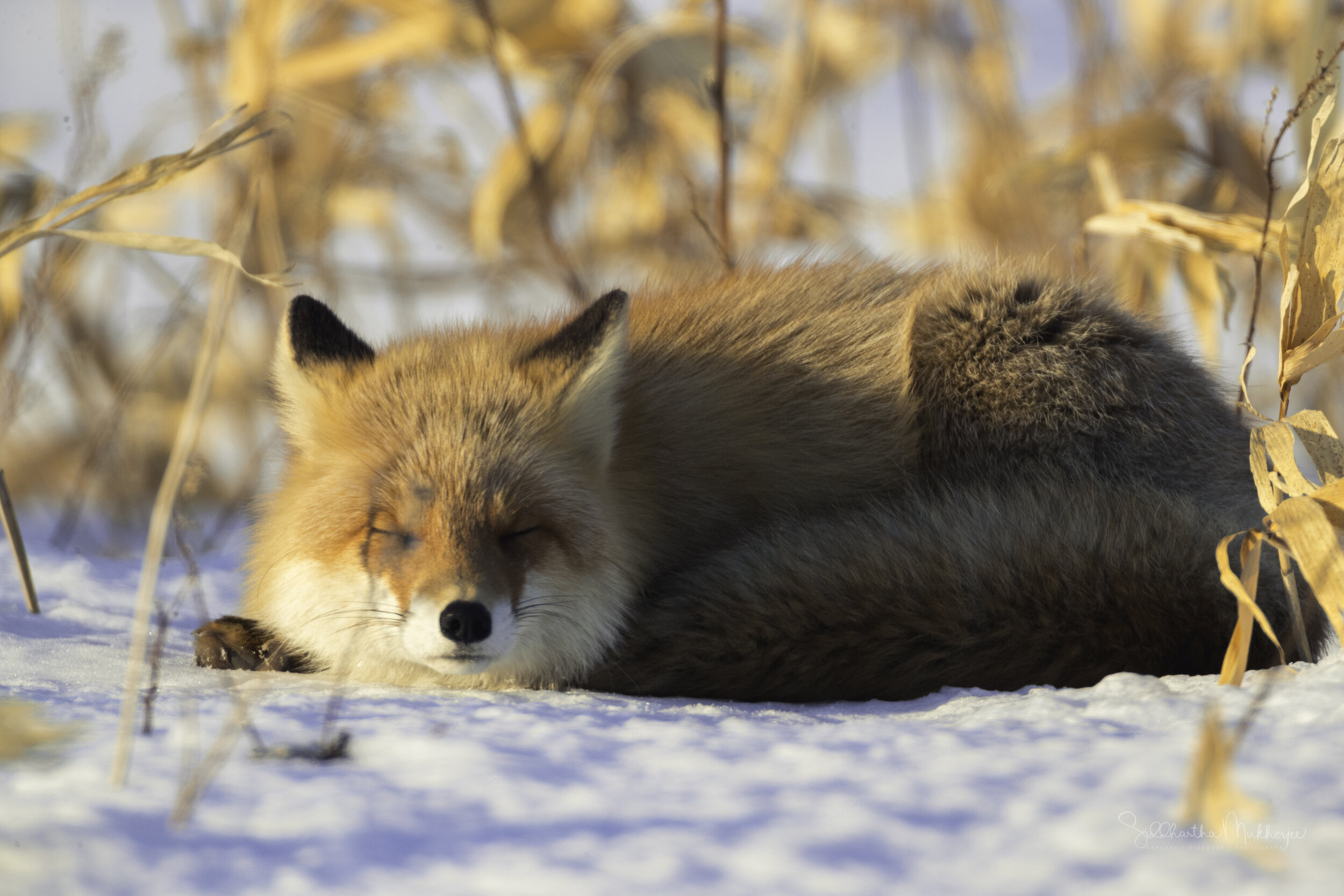
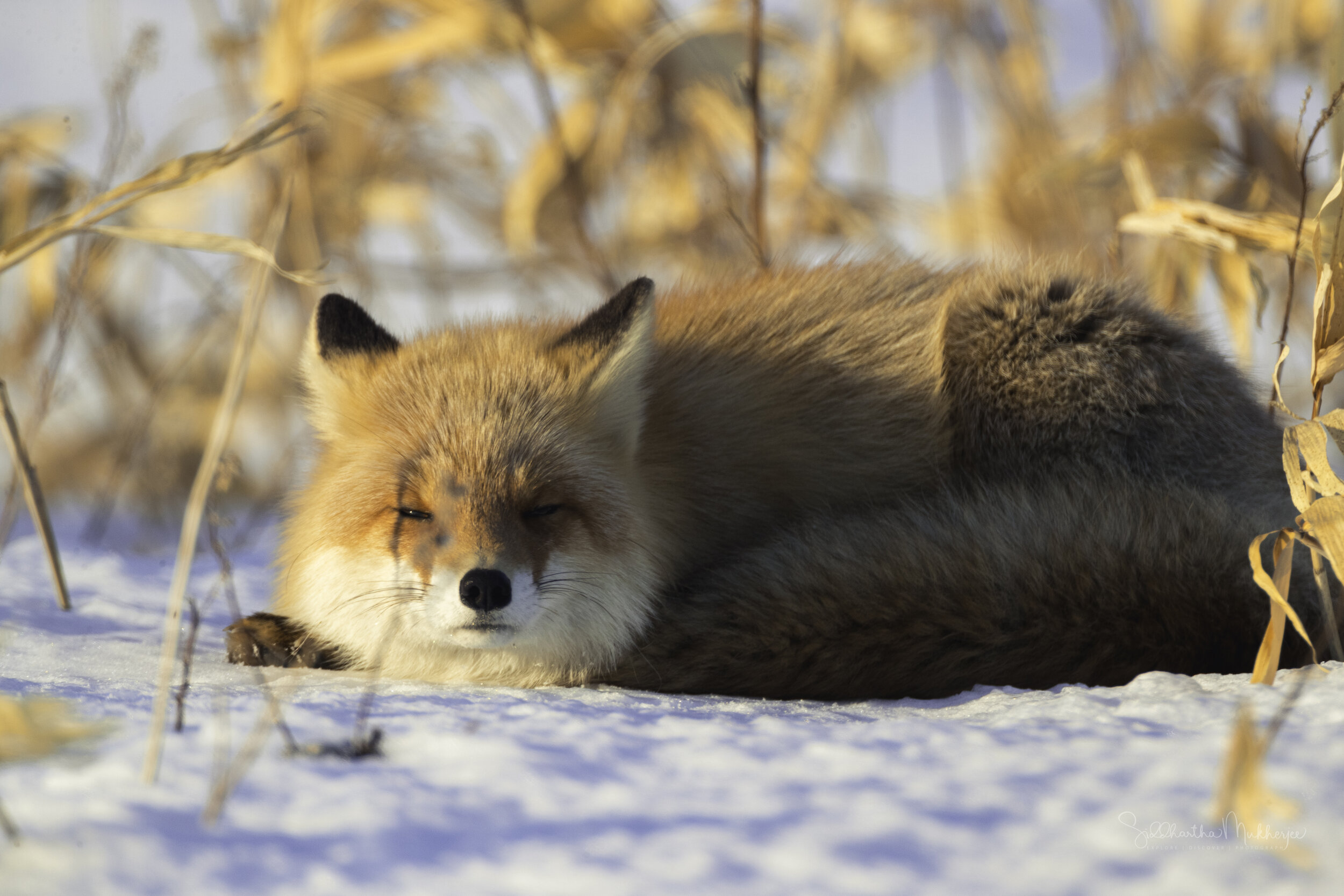
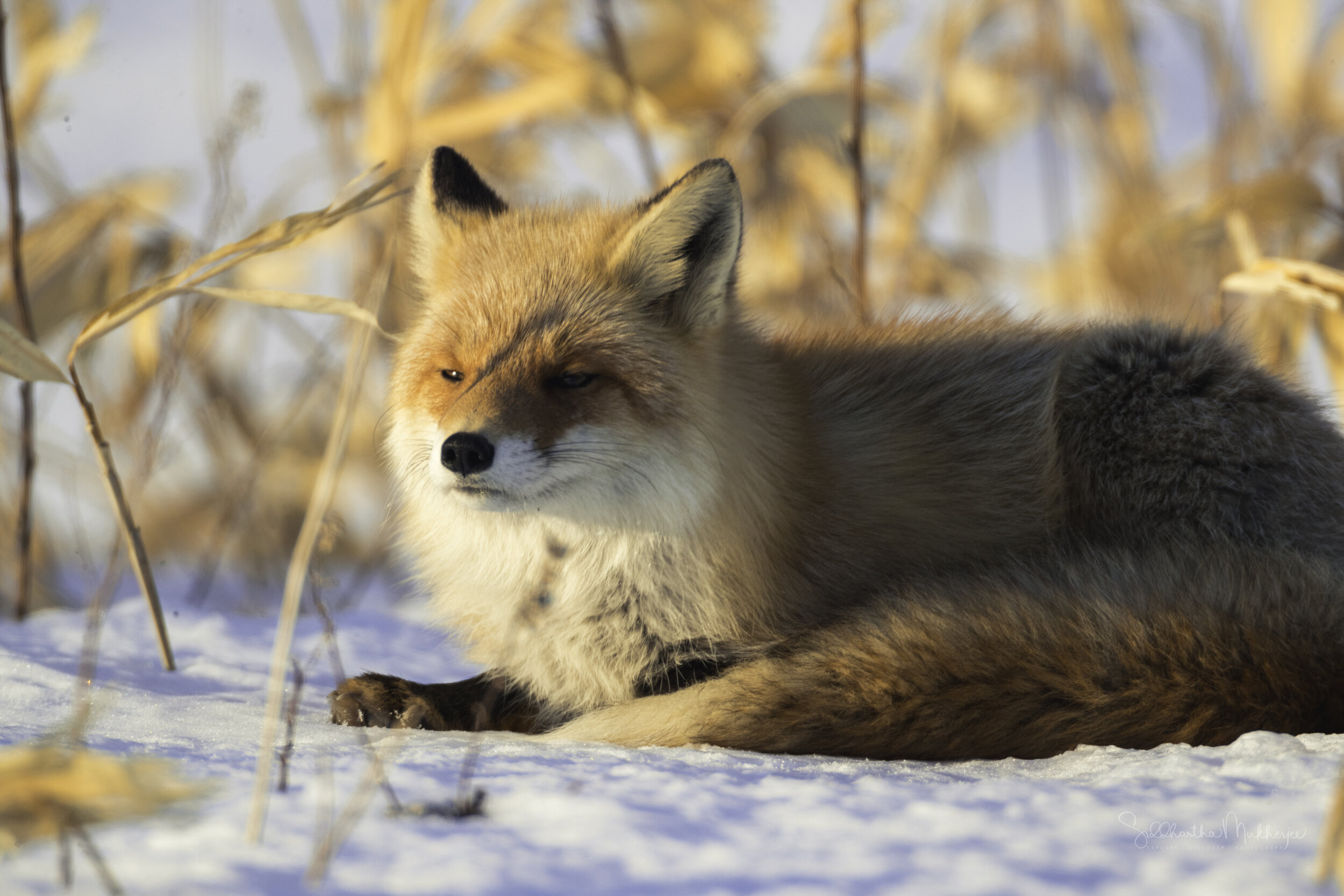
Making a slow, but steady, approach like this will get you closer to your target animal without spooking them and sending them running for the hills. Sometimes you’ll find they run off anyway, but certain individuals will react differently and some might come closer to investigate - the Sika Deer, for example, from my last blog, will stop to look providing enough opportunities to photograph them.
I should mention here that this is not really the way I fancy photographing deer as they are aware of my position and are also looking at me. I’d rather photograph them without their awareness of my presence as you can see later in this blog with the photos of the Kanchil (Lesser Mouse-deer). The thing with the following set of photos was that there was no cover at all on the narrow strip of the Notsuke Peninsula.
Read more about the Sika Deer of the Notsuke Peninsula here: Yezoshika
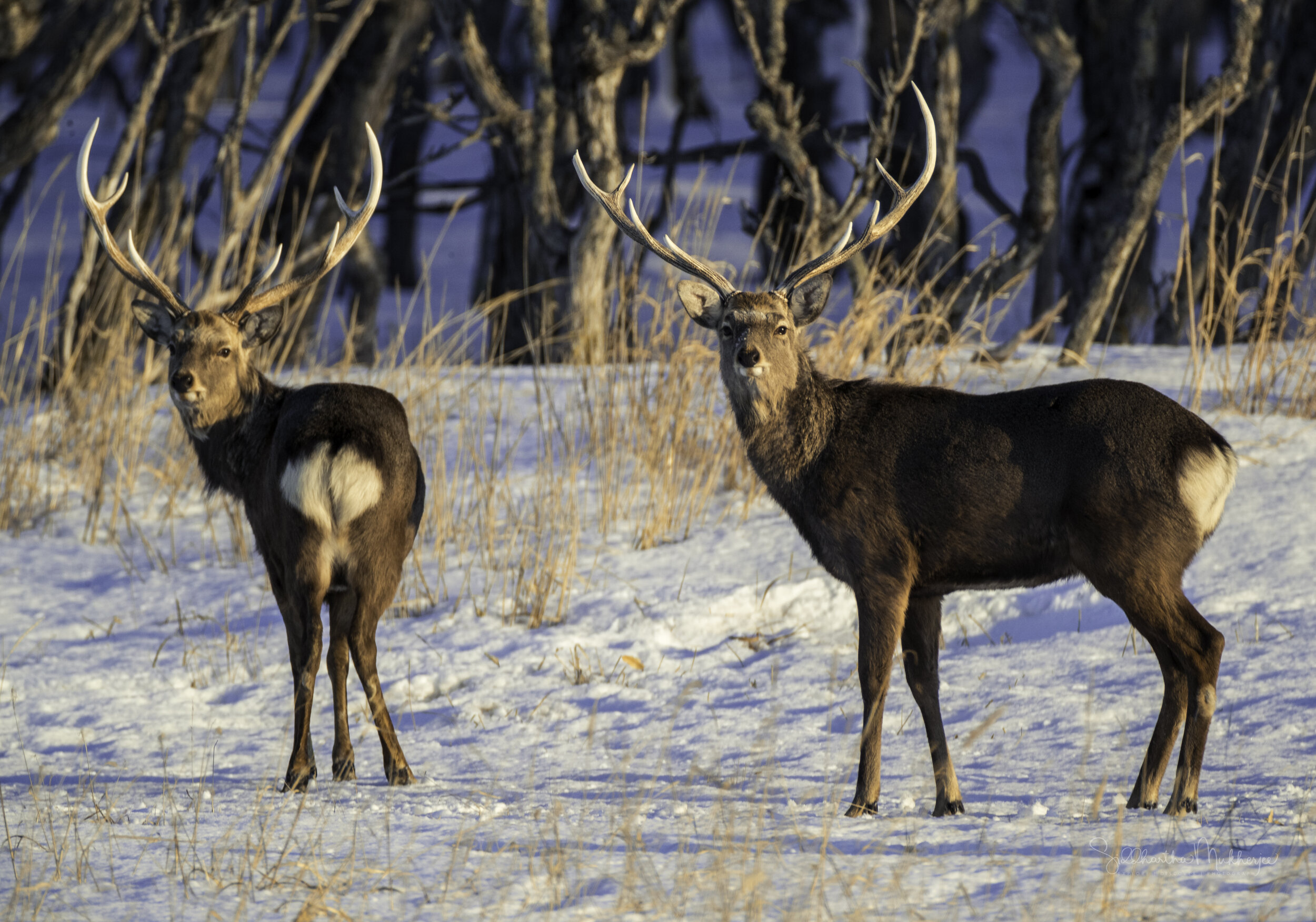
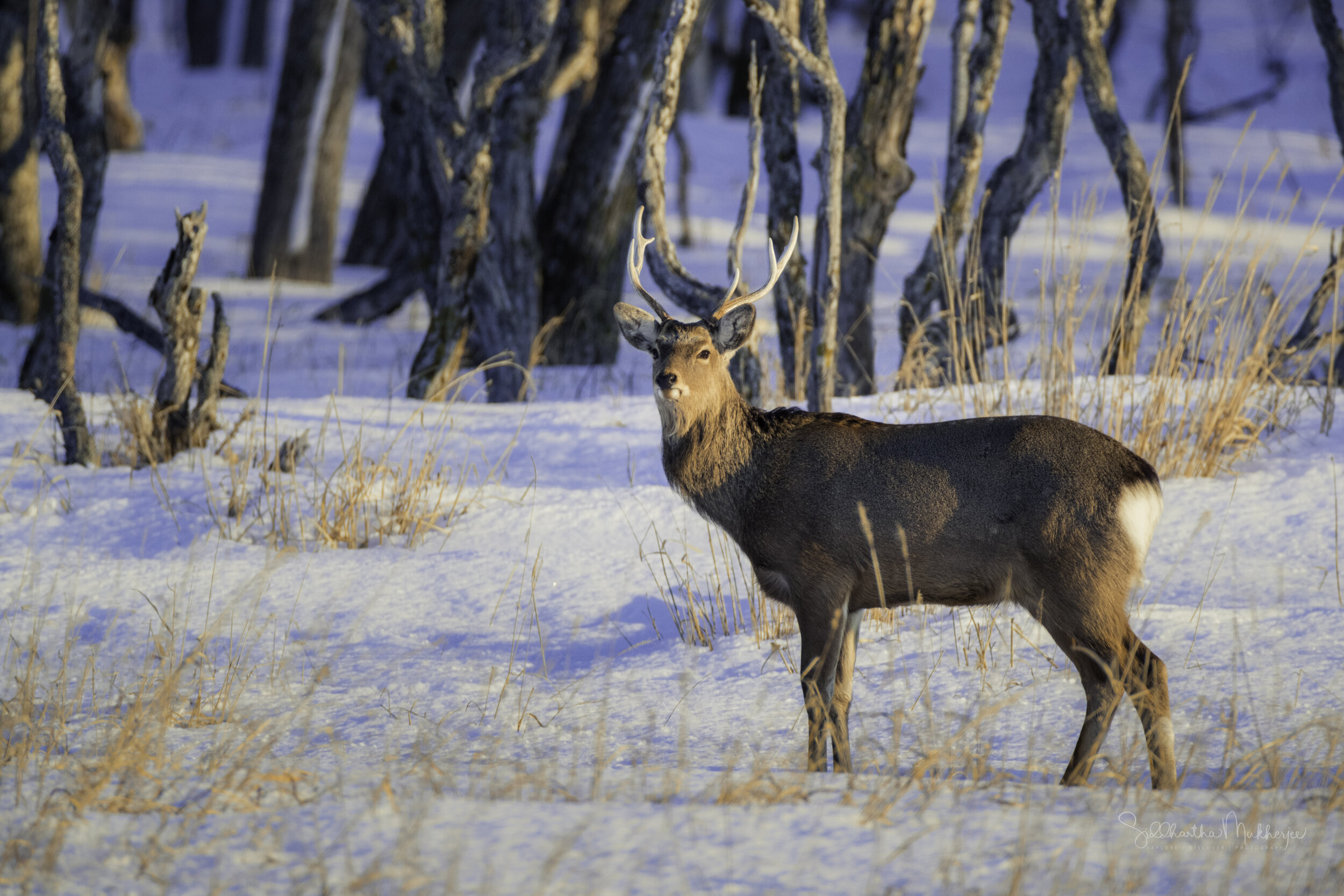
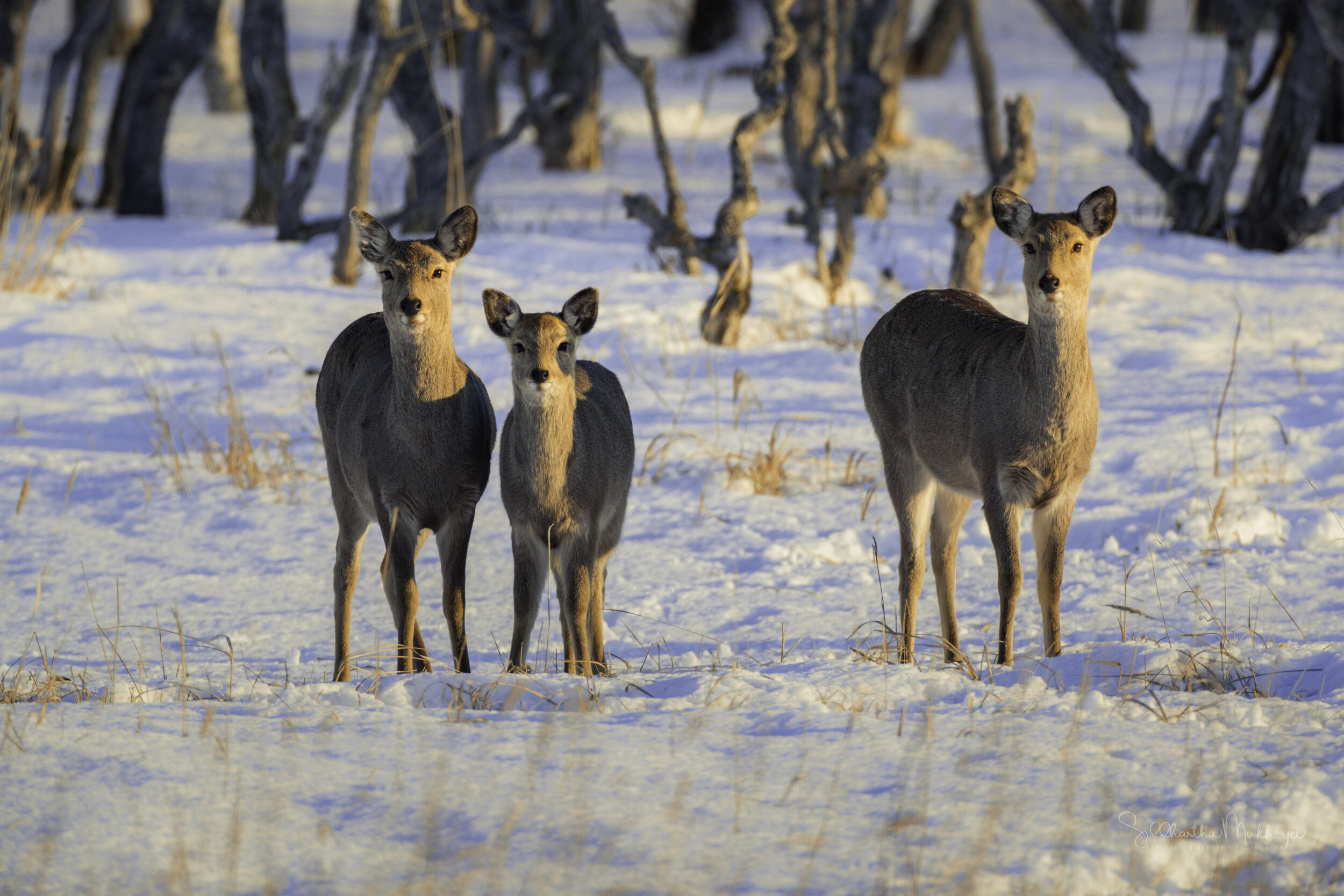


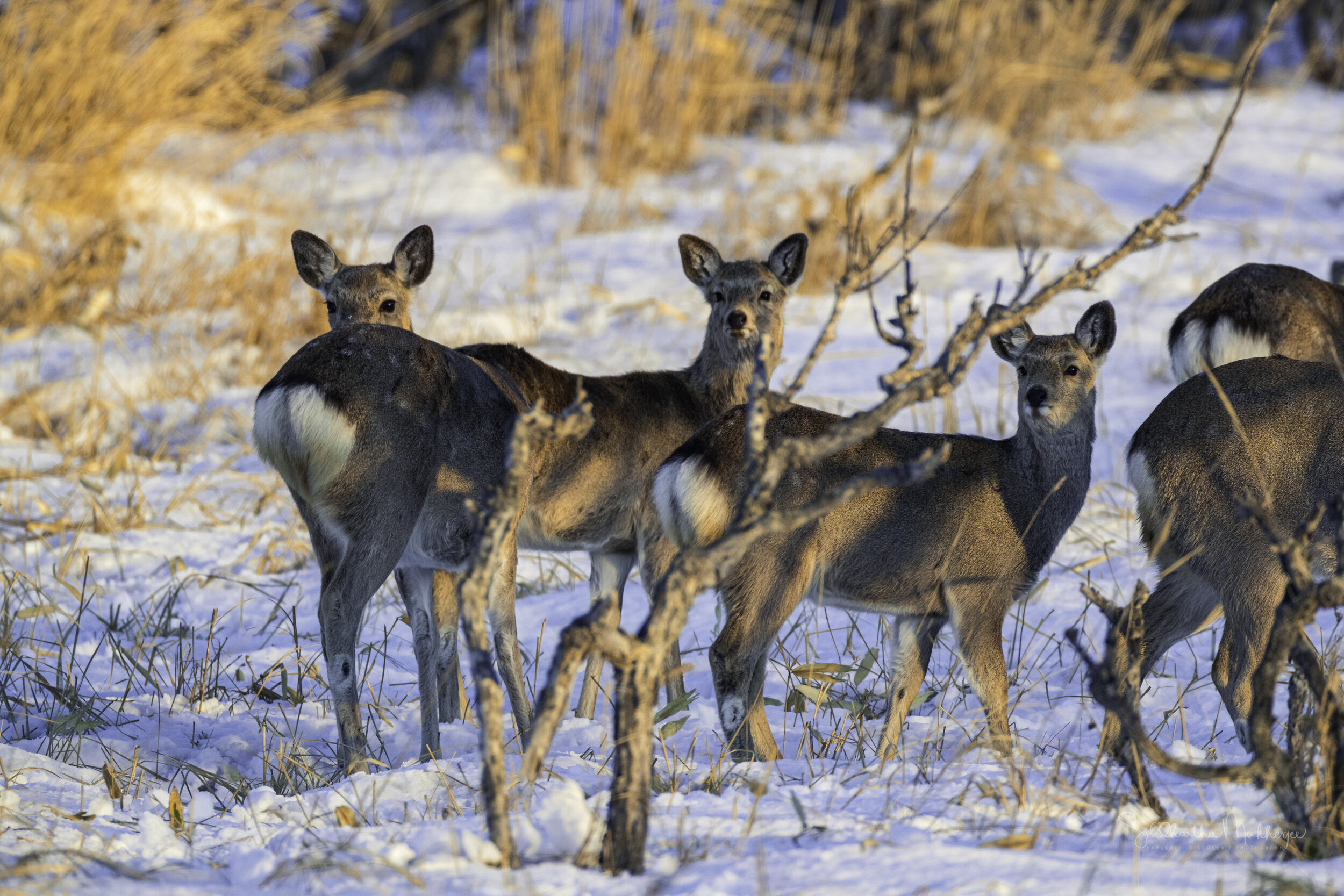
Don’t approach from above
I’ve found success approaching animals on their level, or from below, more than I have approaching from above. For example, if an animal is on a hillside I will avoid moving towards them from a position higher than them. I think this reduces the feeling that they are being preyed upon, and makes you seem less of a threat. Interesting how the psychology works the same as with humans.
I have here some nesting photos where I was able to approach from below without agitating the bird, take a few photos and leave. I am aware people have strong feelings about nesting photos but as long as the bird, nest and the surroundings are not disturbed by the human it should not be a problem. Issues arise when we get too close to the bird and it flies away, in some cases abandoning the nest. I have heard of instances where people have moved the nest to get a better “photo”. This is criminal and should never be attempted as it almost guarantees that the bird will abandon the nest and the eggs or chicks will become easy prey.
One instance was with a Black Naped Monarch in its nest, incubating, which allowed me to approach as I was climbing up the hill towards it, approaching at an angle from below. The bird watched constantly as I approached and it was easy to make out when it was agitated. I got as close as it was comfortable without being agitated and was able to take a few photos and leave without disturbing the bird too much. This photo was taken in 2019 and the nest, obviously, is no longer there.
The next photo is of an Orange-headed Thrush common in well-wooded areas of the Indian Subcontinent and Southeast Asia. Most populations are resident. The species shows a preference for shady damp areas, and like many Zoothera thrushes, can be quite secretive. Here too I have approached from behind a tree and ensured that the bird was not agitated in any manner. Photographed in 2018 and again the nest is no longer there.
The third photo is of a Shikra which took quite a while to approach. The vegetation was dry, dense and thorny. The nest was at a perfect location making it very difficult to spot and also approach. Our final approach was precariously balancing on a fairly steep slope resting against a tree trunk and peering from behind it to get a photo. The shikra watched us all the way and also after we left it followed us for about 15 minutes. I had the opportunity to photograph the same bird lying flat on my back and shooting straight up as it perched overhead.
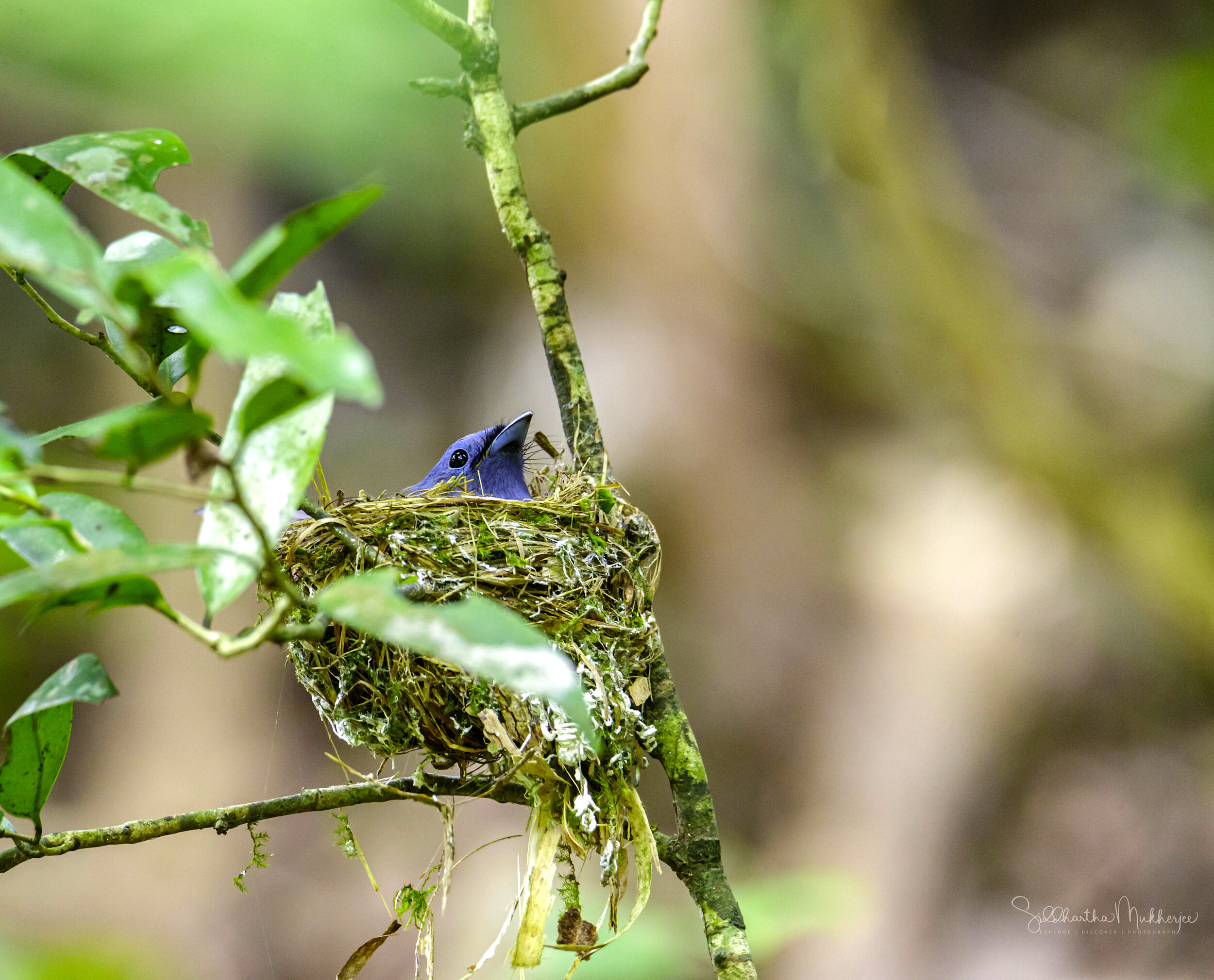
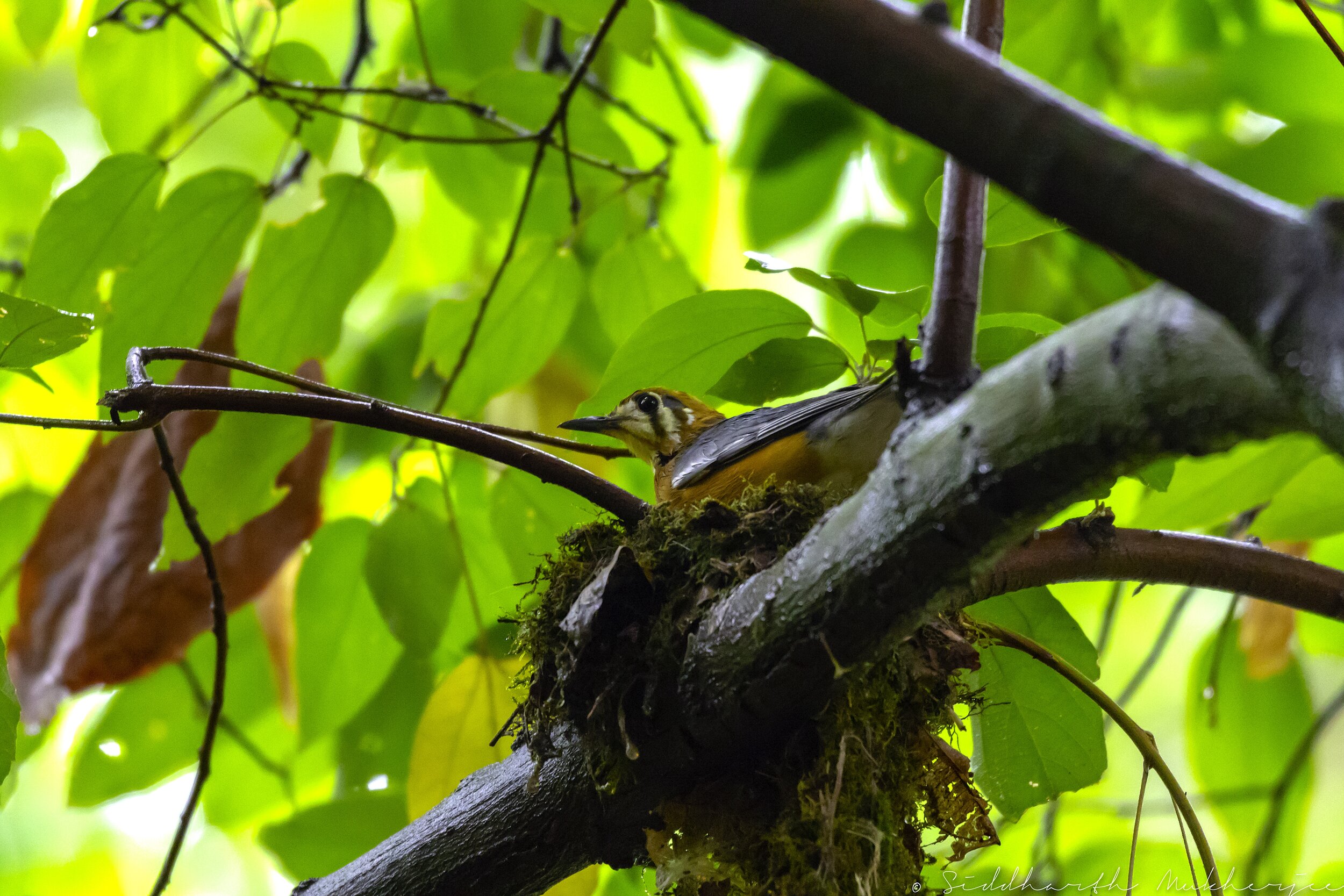

Never approach in a straight line
Sometimes it can be tempting to bee-line straight for your subject, but this makes it obvious that they are your target. Animals move past each other all the time in the wild, but it’s usually predators that go straight towards their prey. Approach in more of a zig-zag, which goes back to the idea mentioned in the first point of showing one eye towards your target. Approaching at an angle also makes it easier for you to know when the animal is aware of you because they will need to turn their head to look at you and this gives that precious moment to freeze.
Here with the Malayan Water Monitor, I was only a feet or two away when I took this photo. I had spotted the monitor approach and angled towards it and went to ground when it was about 10/12 feet away. It came towards me as it spotted me and finally turned away when it was a couple of feet away. This photo was while it turned away and if you look close enough into its eye you can see my reflection in it.
Malayan Water Monitor, Sungei Buloh Wetlands, Singapore
Be as silent as possible
It goes without saying that you should avoid treading on twigs, crunchy leaves, and other potentially loud objects. These sounds are unnatural and will immediately give away your position. However, you should also think about the clothes you are wearing; in particular the material. Waterproof clothing and jeans can rub as you move, creating unwanted noises. Wearing other, more lightweight materials can keep you stealthy. There are trekking shoes available with soles which absorb noise, have softer soles to avoid crunching twigs and leaves.
Avoid wearing bright colors and use earth tones as much as possible or camouflage to break up your shape. Many people will argue whether you need to wear camouflage clothing when watching or photographing wildlife. Personally, I don’t think camouflage clothing is there to ‘hide’ you but to ‘disguise what you are’. In the wild, most animals see humans as predators and will avoid us. They identify us as by our shape, smell, movement and the sounds we make. Camouflage will help disguise the human unique biped shape by breaking it up, however, this will work better with mammals than birds who have a much better eyesight generally. Also there are materials available now which mask your odour.
Other ways to break up your shape is to cover your face (which stands out) and keep a low profile. When it comes to stalking, birds are difficult to do so with and it is best let them come to you. Their eyesight is usually very good, especially birds of prey and are particularly sensitive to movement. Most don’t have a sense of smell with hearing usually good. In winter time, birds are far less cautious.
Trekking in the dense forests carrying my giant tripod, camera and lens and a heavy camera bag - as quietly as possible.
Think About the Wind Direction
If you are approaching upwind of an animal, you’ll have your scent blowing straight towards them. This is a huge giveaway, and it’s doubtful you’ll get anywhere near an animal if you fill their nostrils with aftershave or perfume! Even the natural scent of a person is too much, though, so it is best to approach downwind. This means that the wind is blowing into your face, or across you, rather than coming from behind you and blowing towards the subject. The sun and shadows too if the sun is in the subjects eye there are lesser chances they’ll spot you unless obviously you are outlined against the sky or any other background that will make you stand out.
The following are some photos that were taken from the hide of an erstwhile poacher deep in the jungles of Thailand. We were in a hide downwind of an open patch of ground cutting across a couple of trails.
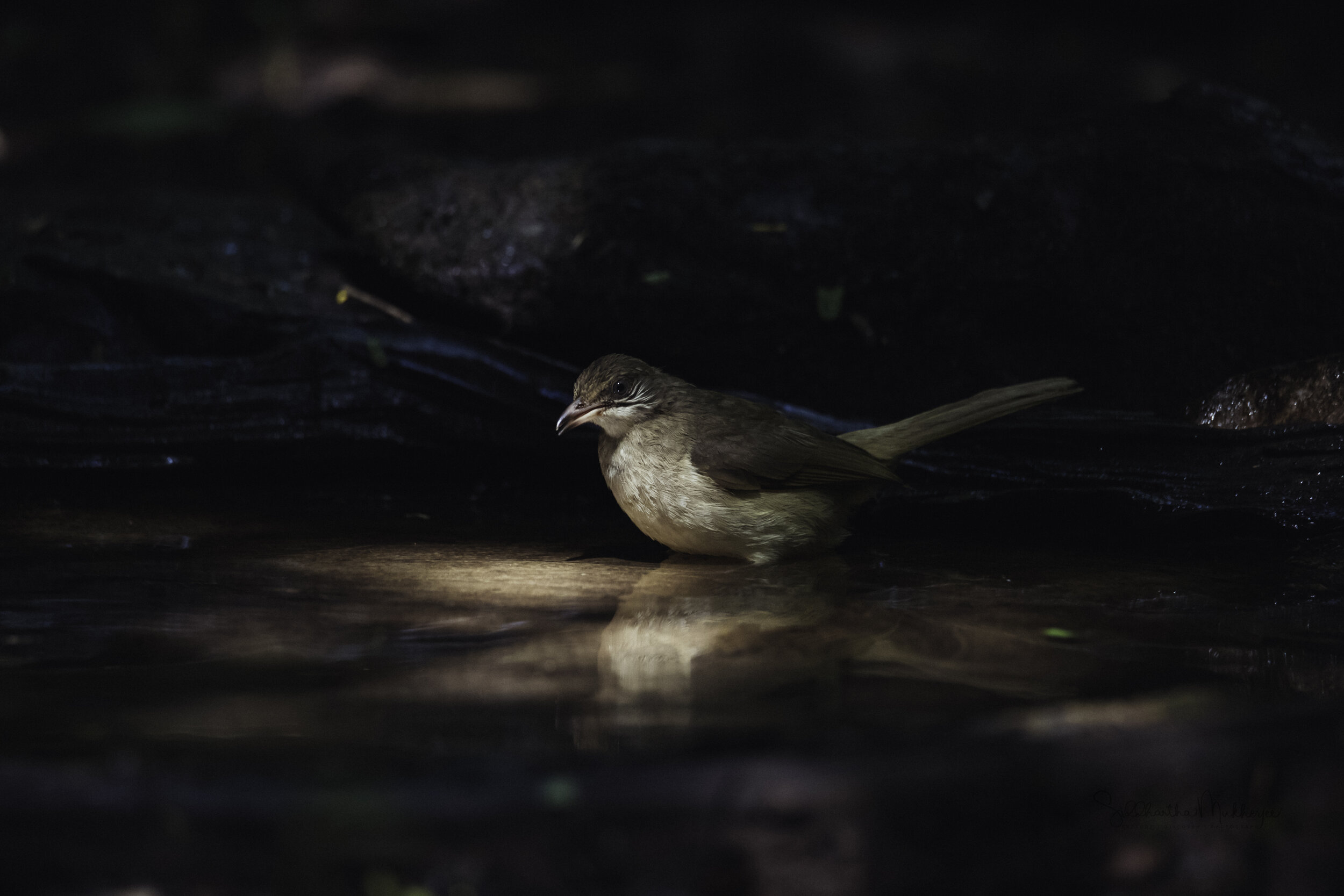
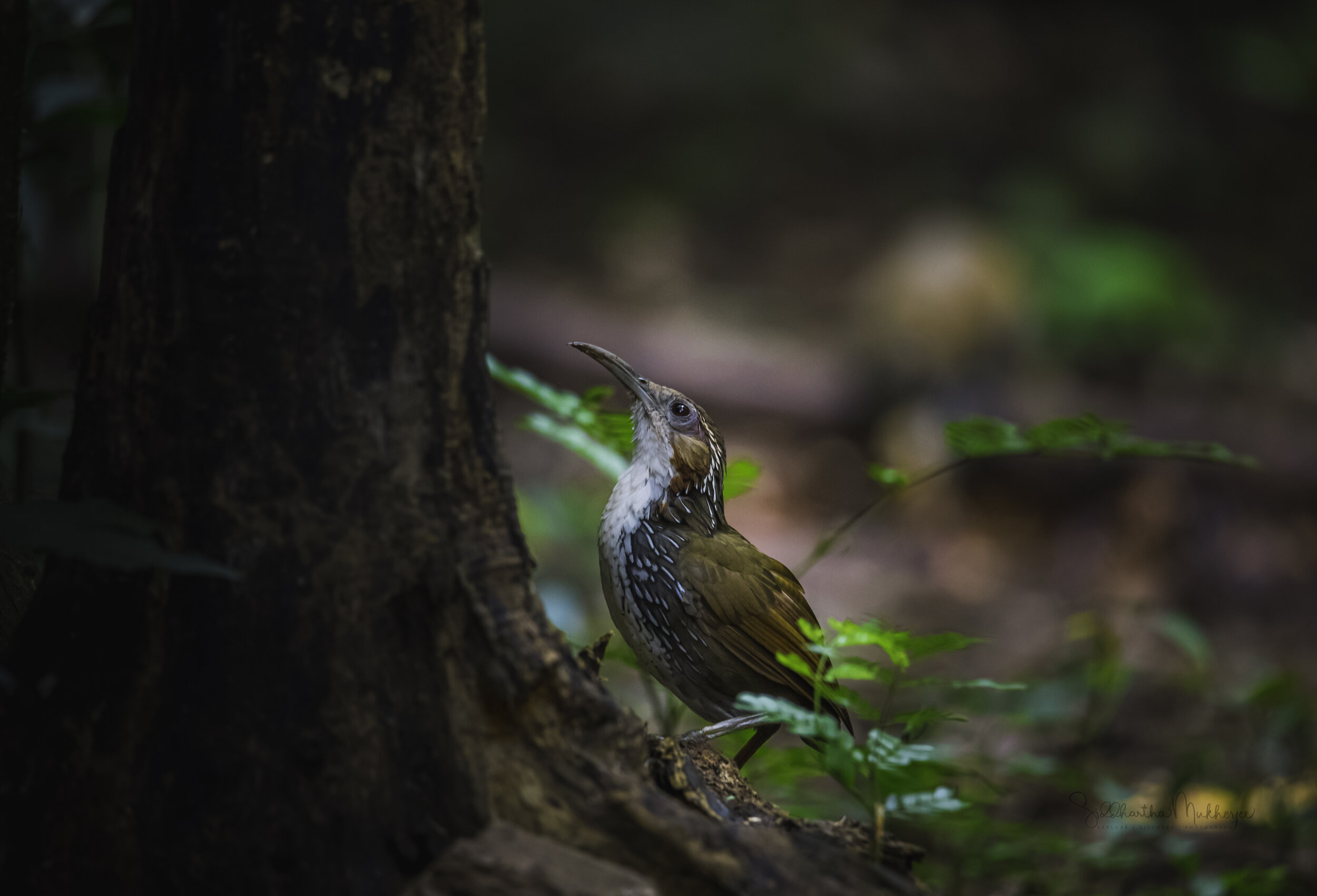
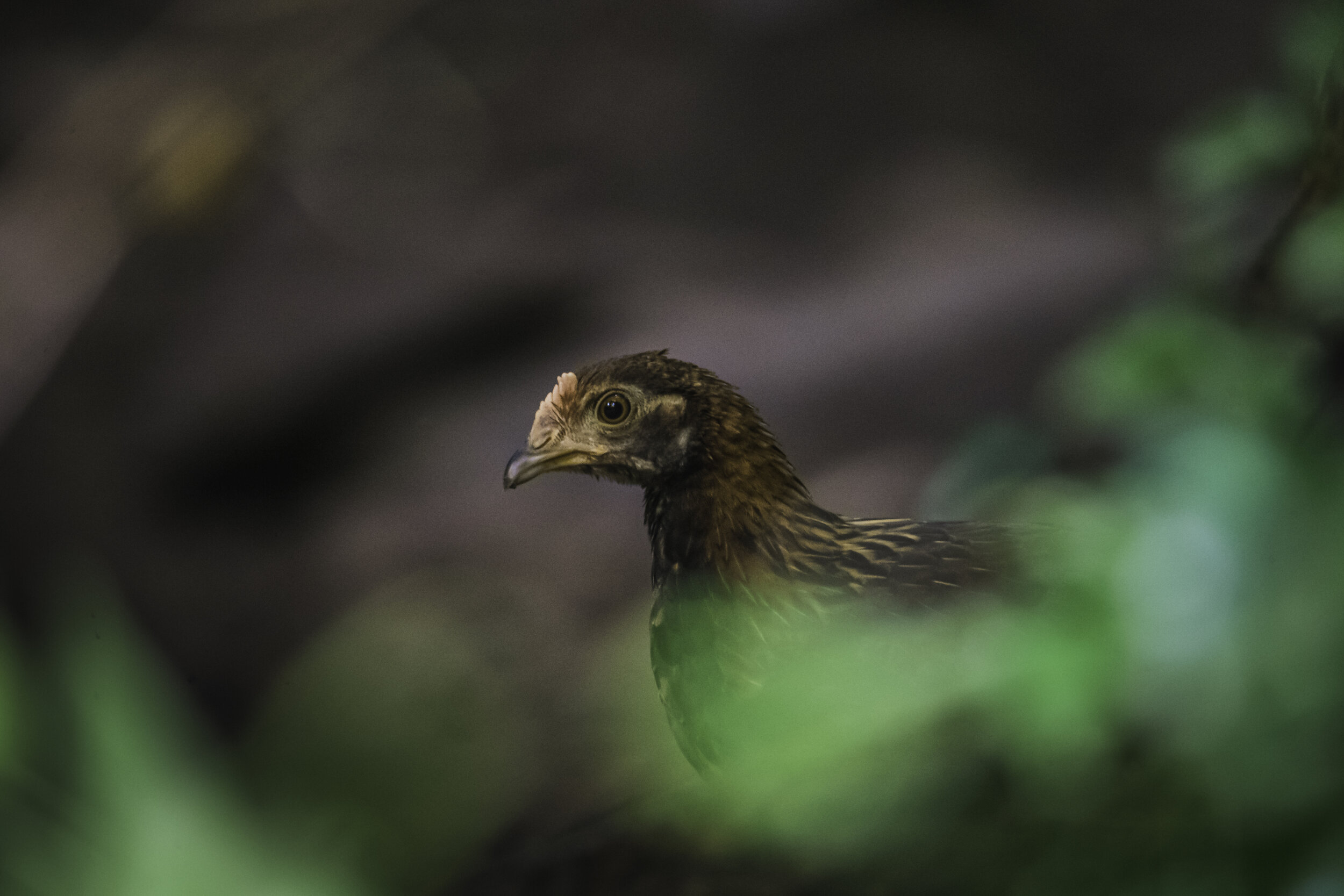
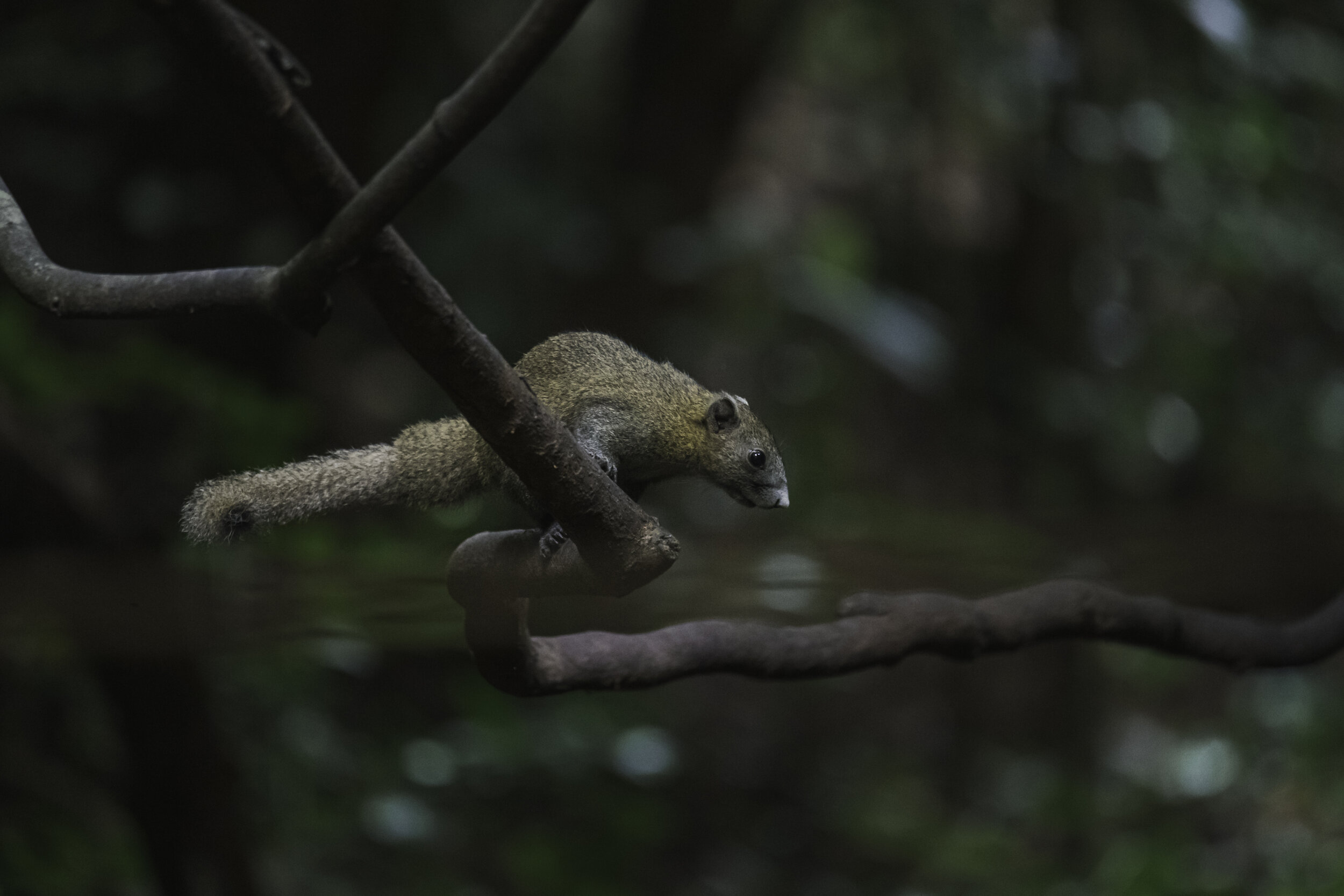
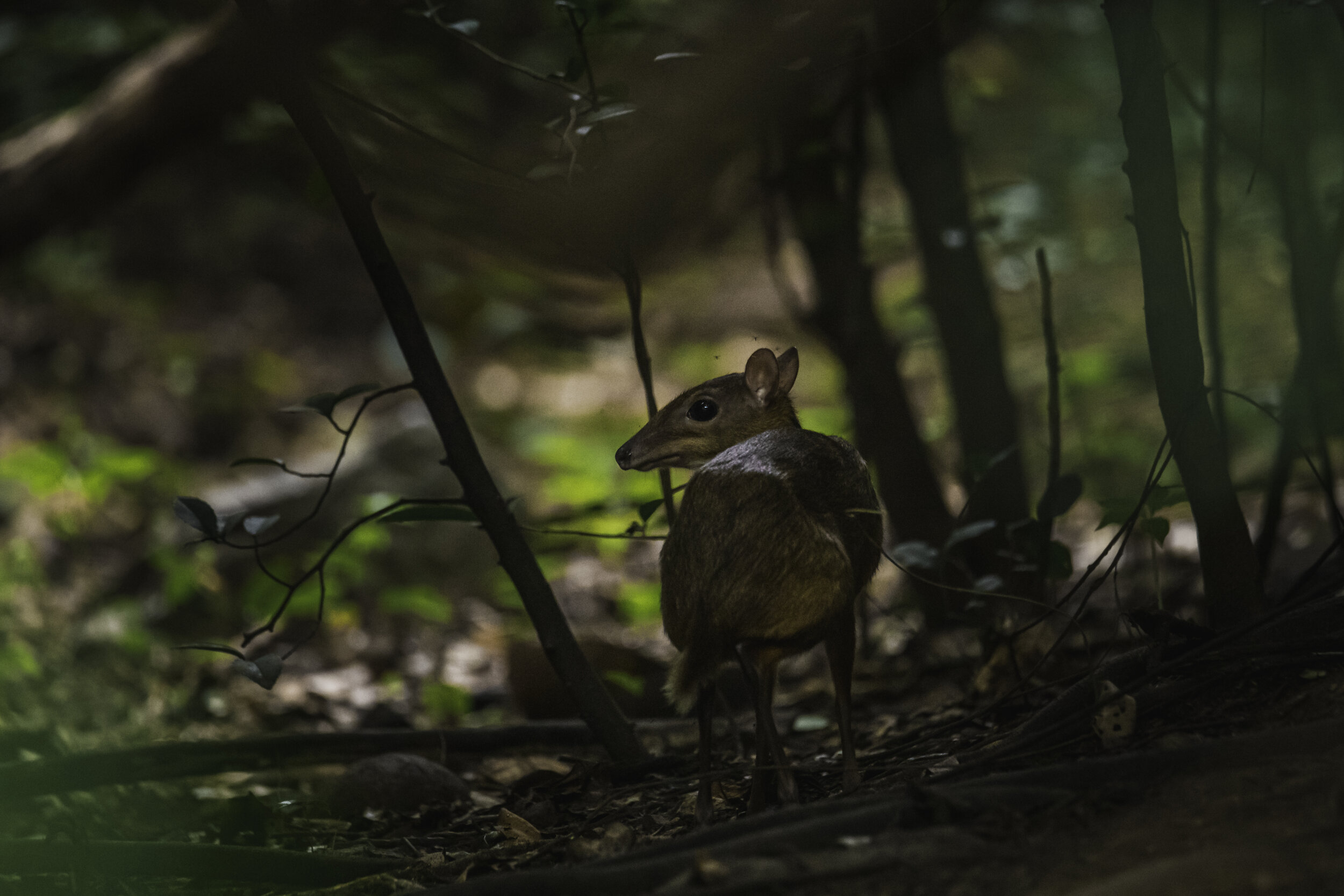
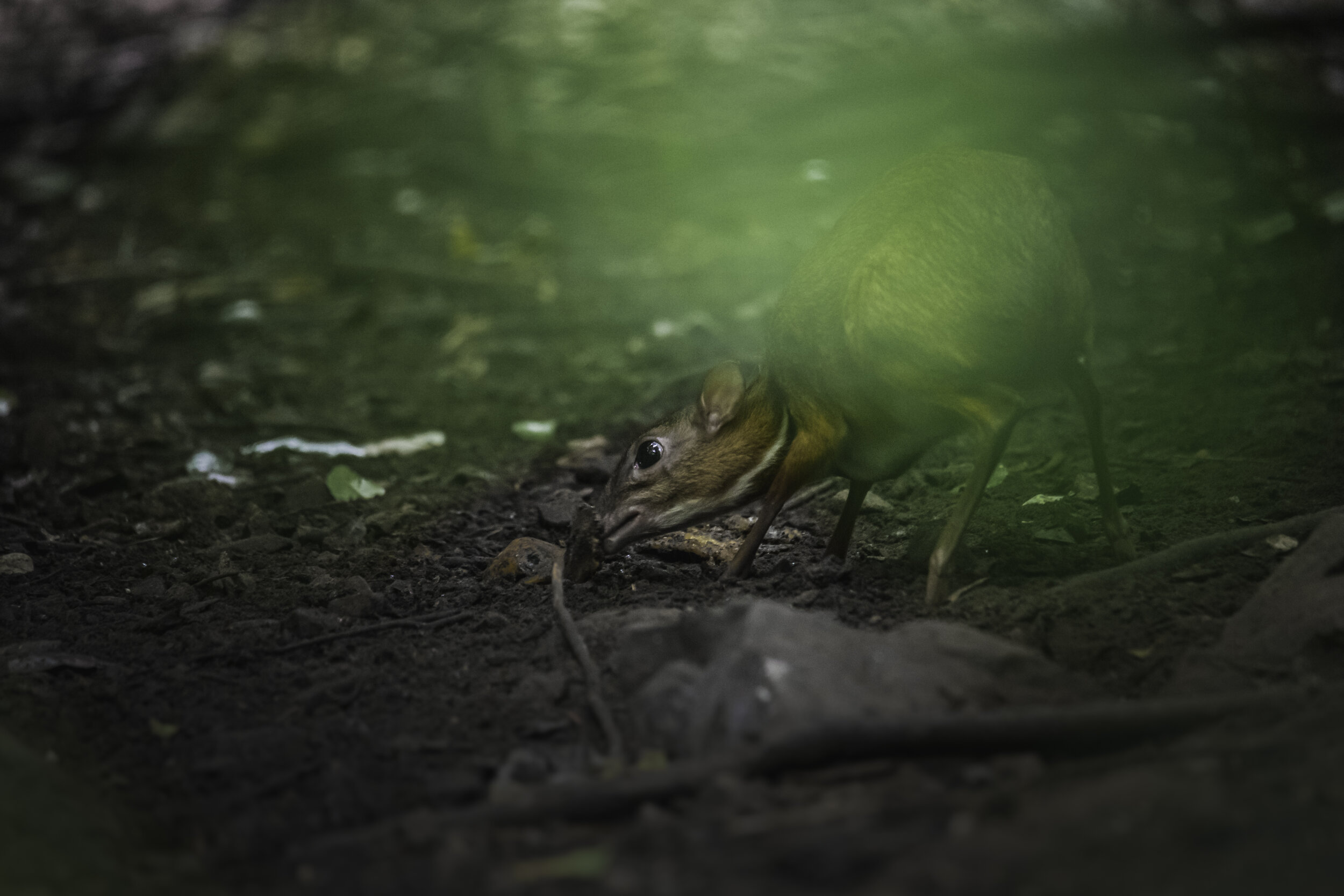
You Don’t Need Camouflage
Fieldcraft doesn’t mean kitting yourself up with a ghillie suit albeit I almost got to that point; typical “army camouflage” is not necessary for getting near the animals. However, think about the colours you are wearing. Bright pink or white is not a good choice, for example. Stick to muted, natural colours. If approaching a very wary animal, such as a deer, I will hide as much skin as possible – skin is like a shining beacon showing where I am. Camouflage is an easy solution because it gets all that done in one swoop.
On the Thailand-Myanmar Border. The Thai border checkpoint is on the left behind me.
Many people will argue whether you need to wear camouflage clothing when watching or photographing wildlife. Personally, I don’t think camouflage clothing is there to ‘hide’ you but to ‘disguise what you are’. In the wild, most animals see humans as predators and will avoid us. They identify us as by our shape, smell, movement and the sounds we make. Camouflage will help disguise the human unique biped shape by breaking it up, however, this will work better with mammals than birds who have a much better eyesight generally.
Other ways to break up your shape is to cover your face (which stands out) and keep a low profile. When it comes to stalking, birds are difficult to do so with and it is best let them come to you. Their eyesight is usually very good, especially birds of prey and are particularly sensitive to movement. Most don’t have a sense of smell with hearing usually good. In winter time, birds are far less cautious as well.
Mammals are different. For example, deer have a very good sense of smell and hearing though their eyesight is limited with monochromatic vision – they only see in shades of black and white. They can, however, detect light reflection from an unnatural material so it’s that rather than colour, that deer are alerted to. they also have the ability to detect the slightest physical movement and can spot a moving human form at considerable distances. Also depends on what the terrain is. In open terrain animals are slightly more relaxed as they can spot predators from far away vs in dense forests where they are very jumpy.
Don’t rush
All of your movements should be slow. If you’re in position and are moving to take a photo, lift your camera slowly and steadily. Don’t get overexcited and unzip your camera bag in a rush. This sudden movement will spook your subject. Even lifting up the camera quickly to the eye can cause the animal to spook. Instead, remain in position and let them get used to you for a moment. Then get out or lift up your camera, and start taking pictures.
Many people when taking a walk in the country, particularly in a wood, will not really look around them. When walking, look around at your feet and see what you can find. It can give you a good idea as to what is around – tracks, droppings, pellets, remains of kills. Winter and summer give different opportunities. In winter, especially in the snow, you can find tracks everywhere. Summer shows routes and paths made in the undergrowth by larger animals which will tend to use the same paths.
In a hide on Doi Luang, Chiang Mai, Thailand
Foxes are a bit similar to deer, so you can quietly approach them downwind – it you’re lucky enough to see one first, though normally letting them come to you is your best bet. Personally I find them difficult to photograph because they are smaller and so more likely to be hidden unless out in the open. I also found when photographing both these animals a single click of the camera’s shutter can stop them in their tracks and get their attention giving you the chance to take a photo as they remain motionless, staring at you. Useful if you are shooting in low light with a slow shutter speed. These stopped and looked around after hearing my shutter.
Listen out for other animal calls. Many birds will ‘mob’ predators and can often be the first indication that there is an animal around.
Burst mode isn’t always the best choice
Having your camera in burst mode isn’t necessarily the best option when you’re photographing nervous or sensitive animals. If you’re using a mirrorless camera then you’re probably okay, but DSLR users will find that the sound of the shutter firing rapidly is too loud. You wouldn’t want to continually and rapidly snap twigs, so be selective with your shots. If your camera has a quiet mode, then employ this to reduce your impact. But if you are far away and are using a hide it may not make much of an effect. I have been places where the birds and animals seemed quite familiar with the shutter sounds and didn’t spook as much.
In Conclusion
Remember, whatever you do with your wildlife photography should always adhere to good ethical practices. It’s important not to encroach on an animal if it’s going to cause undue stress, especially with regards to young in the breeding season. Don’t get too close to individuals with young, as separating a mother from its offspring can be fatal to the unprotected baby.
There’s a seemingly growing number of photographers, who's only interest is to get a picture and have little interest in the welfare of the wildlife or anybody else around them. It’s something that puts me off using public hides where they seem to collect. I always try to make sure that nothing I do causes harm to the wildlife or environment and have probably missed a number of good photographic opportunities as a result.
And when the forest welcomes you…
Related Posts








